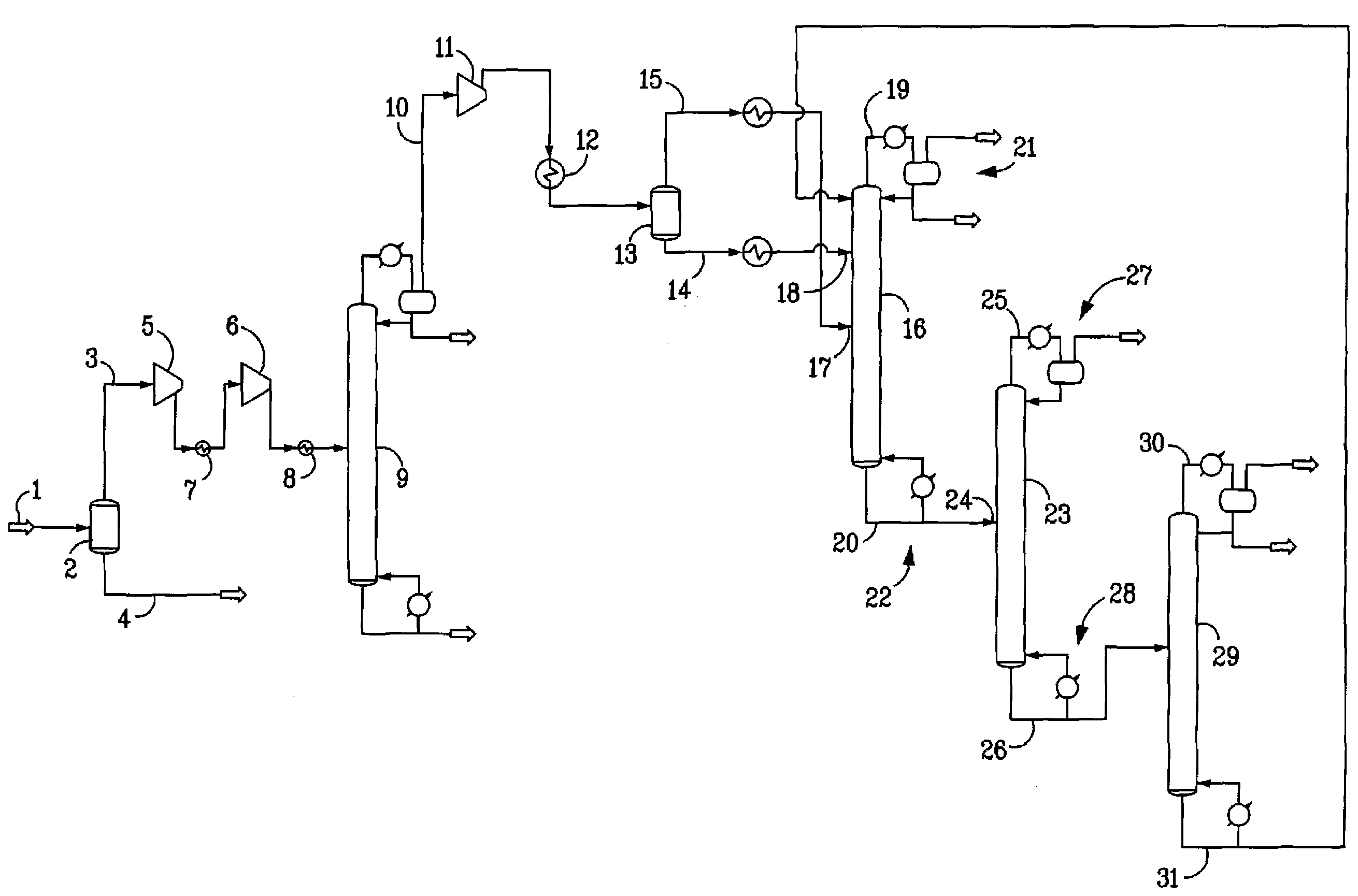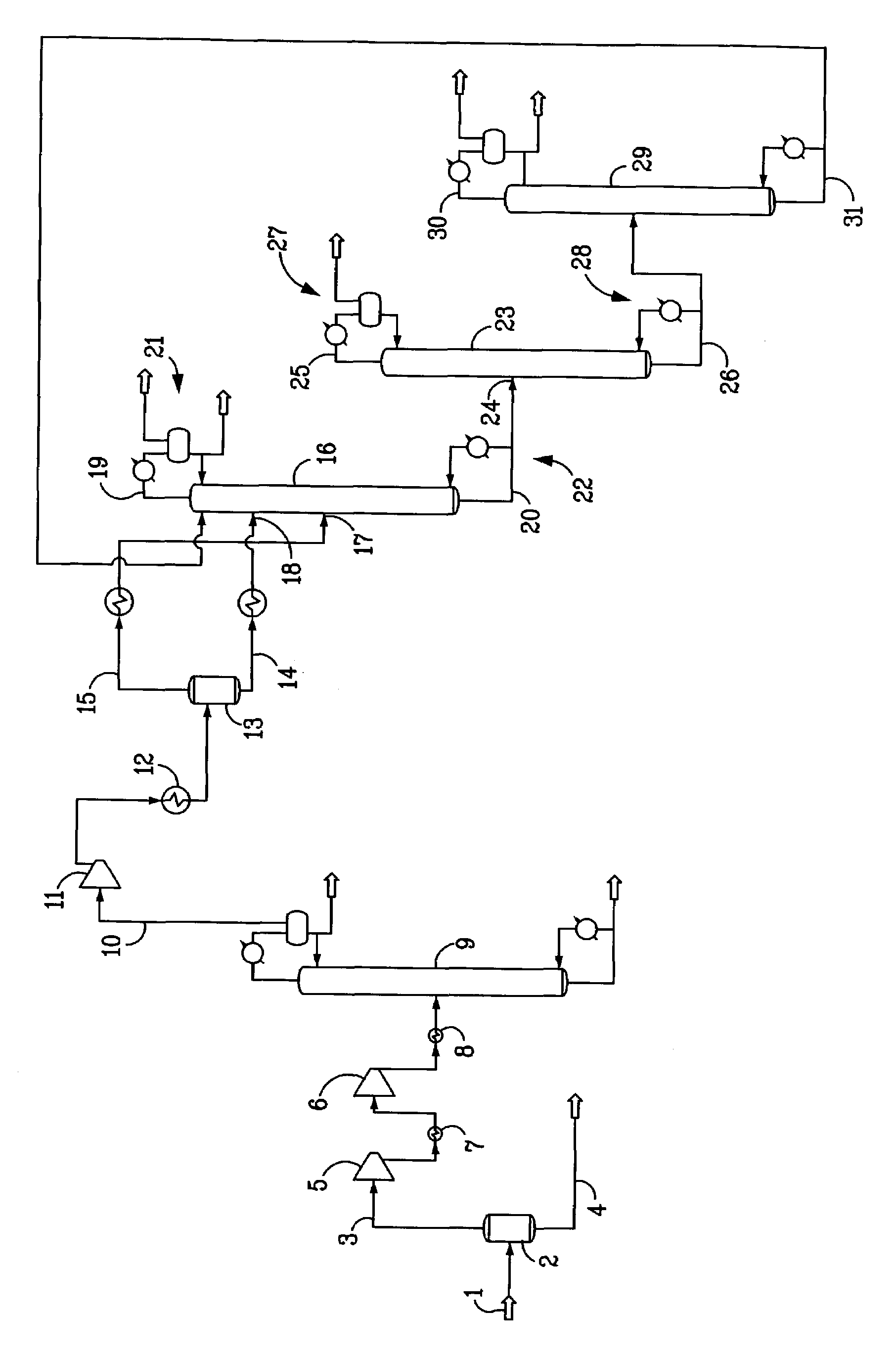Process and apparatus for recovering olefins
a technology of olefins and processing equipment, applied in the direction of hydrocarbon oil cracking process, gaseous mixture working up, separation process, etc., can solve the problems of large cost and added operating cost of downstream separation equipment, olefin recovery plants relating, and the presence of rich absorber solvents
- Summary
- Abstract
- Description
- Claims
- Application Information
AI Technical Summary
Problems solved by technology
Method used
Image
Examples
Embodiment Construction
[0041]The particulars shown herein are by way of example and for purposes of illustrative discussion of the embodiments of the present invention only and are presented to provide what is believed to be the most useful and readily understood description of the principles and conceptual aspects of the present invention. In this regard, no attempt is made to show structural details of the present invention in more detail than is necessary for the fundamental understanding of the present invention, the description making apparent to those skilled in the art how the several forms of the present invention may be embodied in practice.
[0042]As is well known and within the skill of the art, when reference is made to a specific hydrocarbon stream, e.g., a C4 stream, it is not practical or intended that such reference is strictly limited to a pure C4 stream, since other components, albeit in small amounts, will also be present (e.g., C3 will be present in a small amount in a stream designated ...
PUM
| Property | Measurement | Unit |
|---|---|---|
| Fraction | aaaaa | aaaaa |
Abstract
Description
Claims
Application Information
 Login to View More
Login to View More - R&D
- Intellectual Property
- Life Sciences
- Materials
- Tech Scout
- Unparalleled Data Quality
- Higher Quality Content
- 60% Fewer Hallucinations
Browse by: Latest US Patents, China's latest patents, Technical Efficacy Thesaurus, Application Domain, Technology Topic, Popular Technical Reports.
© 2025 PatSnap. All rights reserved.Legal|Privacy policy|Modern Slavery Act Transparency Statement|Sitemap|About US| Contact US: help@patsnap.com


